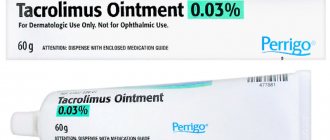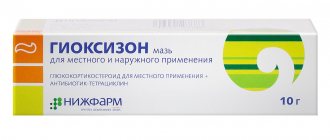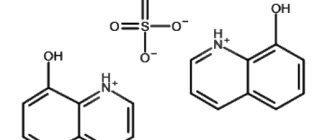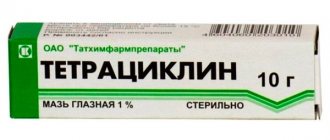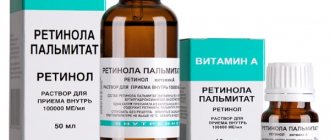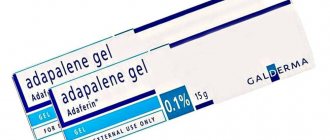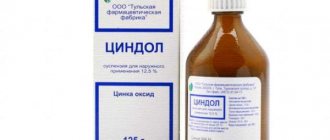Arnica montana belongs to plants of the Asteraceae family. This is a plant with a thick rhizome, a straight stem reaching up to 20-60 cm in height, and with one or two pairs of small leaves growing on opposite sides. The flowers are large, bright yellow. The flowering process occurs in June-July. Arnica grows in open areas in clearings and meadows at an altitude of 500 m above sea level. Geography of growth - Ukraine, Belarus, Latvia, Lithuania. Flowers (most often), leaves and roots of the plant are used in medicine. Arnica has choleretic, antispasmodic and cholekinetic effects.
Description
Arnica montana
A perennial herbaceous plant 15-80 cm high with a short, weakly branched rhizome. Thin, cord-like roots extend from it. In the first year of life, the plant forms a rosette of 6-8 large leaves, from the second year - a stem and flower baskets.
The stem is often single, weakly branched in the upper part. Stem leaves are opposite, lanceolate or obovate, pubescent above, glabrous below. At the tops of the stem and branches, flower baskets up to 5 cm in diameter are formed, reminiscent of a yellow daisy. The marginal flowers are orange or egg-yellow. The slightly convex receptacle is filled with numerous middle flowers; they are small, tubular, yellow, lighter than the marginal ones.
The fruit is an achene 5-7 mm long, with a tuft, narrowed towards the base. It blooms in June-July, the fruits ripen in July-August.
Release form
Dosage forms of Arnica Montana:
- Drops for enteral use Arnica-Heel, which are available in 30 ml bottles with a dropper. The product is a clear, light yellow liquid with the odor of benzoic acid and ethanol.
- Homeopathic ointment, which is a greenish-yellow substance and is available in 30 g in aluminum tubes.
- Arnica-Hel cream for oily skin care.
- Gel URGO Arnica 50 g.
Distribution and places of growth
Mountain arnica is distributed mainly in the high-mountain meadows of the Carpathians, as well as in the dry meadows of the Upper Dnieper, Upper Dniester and Baltic states.
The usual places for the mass growth of arnica are post-forest hayfields and pastures, as well as forest edges, clearings, swampy meadows, and above the forest border - in sparse thickets of bushes and on rocky, slightly turfed slopes.
In cultivation, you can more successfully grow Leafy Arnica (A. foliosa Nutt) and Chamisso Arnica (A. chamssonis Less.). These species are characterized by smaller and more numerous inflorescences and lanceolate leaves.
pharmachologic effect
Drops are a complex remedy in which substances of animal and plant origin are present in homeopathic dilutions. The drug has pronounced sedative, immunomodulatory, detoxification, decongestant, anti-inflammatory, analgesic and angioprotective effects.
The tincture has pronounced anti-inflammatory and hemostatic properties, and also increases the tone of the smooth muscle layer of the uterus.
The cream is a homeopathic dermatological remedy with capillary protective properties.
The ointment and gel relieve inflammation, have a hemostatic effect, and accelerate the resorption of hematomas and wound healing.
Active ingredients
The inflorescences contain up to 4% of the coloring substance - arnicine, consisting of a mixture of three compounds: arnidiol (arnidendiol), faradiol (isoarnidiol) and saturated hydrocarbon.
Arnifoline, an ester of sesquiterpene oxyketolactone and tiglinic acid, carotenoids, choline, betaine, cynarin (tridipside of caffeic and chlorogenic acids), essential oil (0.04-0.07%), were isolated from the leaves and heads of arnica montana and arnica foliose. which is a dark red or blue-green oily mass. Fatty oil and the red dye lutein are also isolated from the flowers. Organic acids were discovered: fumaric, malic and lactic, both in a free state and in the form of calcium and potassium salts. Ascorbic acid contains 21 mg/%. Fructose (2.5%), other sugars (0.5%), sucrose (1%), inulin, tannins, proteins, chlorophyll and various ballast substances were found in arnica flowers. The inflorescences contain about 5% tannins, as well as cynarine (0.05%), choline, and alkaloids.
Arnica: chemical composition
The main active ingredient due to which the flower has healing properties is arnicin, its amount is 4%. Arnicine consists of arnidenediol, isoarnidiol, and lutein. Additionally, the plant contains:
- resinous and tannin elements (5%);
- vitamins C, B4;
- volatile oily liquids;
- trimethyl derivative of glycine;
- nitrogen-containing organic compounds;
- plant sterols;
- helenin;
- gum;
- sugars, glycans;
- organic acids.
Application in official and folk medicine
Flower baskets and roots contain substances of different chemical compositions, so the range of pharmacological properties is very wide. In experiments, preparations from arnica flowers in small doses have a tonic effect on the central nervous system, and in large doses they have a sedative effect and prevent the development of seizures.
Medicinal properties of Arnica montana
In the experiment, preparations from arnica flowers act hemostatically: they accelerate the process of blood clotting, reduce the amount of blood loss and bleeding time, and in animals under anesthesia, the activity of arnica preparations increases. Arnicin plays a significant role in the hemostatic effect.
Arnica has choleretic properties , mainly due to flavonoids and cynarin, and has an antitoxic effect. When applied to the skin, tincture of arnica flowers has some locally irritating properties and promotes the resorption of bruises, which is associated with the action of faradiol.
The tincture is used in obstetric and gynecological practice as a hemostatic agent for postpartum and post-abortion bleeding due to insufficient uterine contraction, for bleeding in patients with uterine fibroids, inflammatory processes, for dysfunctional disorders of the ovarian-menstrual cycle during childbearing age and in the menopause. This effect is associated with arnifoline. Unlike ergot drugs, arnica lowers blood pressure. For faster resorption of hematomas in case of concussions, hemorrhages in the brain, in the retina of the eye, with muscle pain after overexertion, with acute infections accompanied by hemorrhages (typhus, influenza, rheumatism, etc.), hemorrhagic vasculitis, lumbago, arthritis, tincture arnica is taken orally.
Arnica tincture is used in the same way as a choleretic and anti-inflammatory agent for chronic cholecystitis, cholangitis, cholelithiasis, and hepatitis.
For stomatitis, gingivitis, periodontal disease, neuralgia and toothache, the local hemostatic, anti-inflammatory, analgesic and epithelializing properties of arnica are used. Use an infusion of arnica flowers: 1 tbsp. A spoonful of flowers is brewed with 1 cup of boiling water, left for 30 minutes, filtered and used for rinsing.
Attention! Arnica is a potent remedy and must be treated with caution. An overdose of arnica preparations increases sweating, aching pain in the extremities, chills, shortness of breath, nausea, vomiting, abdominal pain, and increased diuresis. Possible dysfunction of the cardiovascular system, tachycardia.
How to use for lactostasis
Research on the use of arnica extract during breastfeeding has not been conducted to the required extent, therefore, without first consulting a doctor, using the ointment is not advisable. The appearance of stagnant processes in the milk ducts can lead to pain, purulent mastitis and infection in the area of stagnation.
Promoting easier milk flow, Arnica ointment is often used for lactostasis.
It promotes rapid onset of relief in the mammary glands, relieves swelling and reduces pain. The drug is applied in the periods between feedings with light massage movements. Immediately before feeding, it is recommended to cleanse the mammary glands to remove any remaining ointment.
Use at home
The most convenient for preparation and use at home is arnica tincture with alcohol . It is prepared from finely chopped flowers in 70% alcohol in a raw material to solvent ratio of 1:10. Infuse for 2 weeks in the dark and then filter. The tincture is used 30-40 drops with water or milk before meals 2-3 times a day.
When applied topically ( for hematomas and sprains ), to avoid irritating effects, the tincture is diluted with water 1:5 or 1:10. Arnica tincture is used to lubricate bruises, abrasions, hematomas, sprains and joint injuries, and skin with fresh frostbite . In the form of cold lotions, a water infusion of arnica is used in the first hours after joint injuries , for large subcutaneous hematomas . Compresses are used for injuries as a resolving agent in more distant periods after the injury - for 3-4 days.
For skin diseases, pustular rashes, inflammatory conditions of the skin, burns, frostbite, use lotions or washes with a water infusion of arnica flowers.
Arnica tincture is used topically for periodontal disease , for which 10 ml of arnica, eucalyptus and calendula tinctures are mixed equally, adding 100 ml of peach oil. The mixture is used for applications in tooth-gingival pockets and for irrigation of gums.
An infusion of arnica flowers is prepared at the rate of 10 g of flowers per 200 ml of water. Apply 1 tbsp orally. spoon 3 times a day, washed down with milk or water. Indications for use are the same as for arnica tincture.
special instructions
When using a homeopathic remedy, there is a small chance of temporary exacerbations. If this happens, it is recommended to temporarily stop using arnica extract and consult a doctor.
The drug does not affect the speed of reflexes and the ability to concentrate, since it does not contain aggressive agents. The ointment can be used by persons whose activities require quick reactions: when using it, you can control vehicles and moving mechanisms.
Before using the medicine, adults and children need to make sure that the wounds subsequently treated are not infected. The penetration of pathogenic microorganisms into damaged tissue requires additional treatment in the form of antibiotics.
The ointment should not be used to treat open wounds resulting from varying degrees of damage.
Contact with mucous membranes (oral cavity, eyes, nose) should be avoided, and if the product gets in contact, you should immediately rinse the area with plenty of water.
Growing on site
Mountain arnica is demanding on soil fertility and moisture . It grows mainly on acidic meadow and forest soils. It is light-loving and is not found under tree canopy.
Growing mountain arnica in the Non-Black Earth zone encounters certain difficulties - the plant does not overwinter well and suffers from getting wet and dampened under the snow. More promising are arnica foliaceus and arnica Chamisso. For them, it is preferable to choose areas with high soil fertility and free from perennial weeds. Areas with heavy, floating soils and stagnant moisture in the spring are unsuitable. This may cause the plants to get wet. Too acidic soils are also unsuitable; a slightly acidic or neutral reaction environment is optimal. Arnica is demanding of moisture, so during drought there is a severe shortage of yield, the duration of flowering is sharply reduced, the number of flowers on the inflorescence and their diameter decreases. The soil is dug up in the fall, carefully selecting rhizome and root shoot weeds. At the same time, add 2-3 buckets of compost per 1 m2.
Reproduction
Arnica can be propagated vegetatively by seeds or pieces of rhizomes.
Seeds do not require preliminary preparation. They are sown in early spring. The width between the rows is 50-60 cm, the planting depth is 1-1.5 cm. Under favorable weather conditions, seedlings appear in 2-3 weeks.
through seedlings is more effective, although more labor-intensive . In this case, the seeds are sown in a pot on the windowsill 2.5 months before the intended planting in the ground. Plants are severely affected by blackleg. Seedlings are planted in early June, always with simultaneous watering.
If planting material is available, it is convenient to propagate arnica vegetatively . It is better to select rhizomes at the beginning of regrowth, when the length of the shoot reaches 5-7 cm. Planting pattern - 25 x 25-30 cm. Selected rhizomes are poorly stored, so they are dug up as needed and planted immediately.
Care
In the first year of life, it includes 3-4 weedings (especially on crops), inter-row loosening. Advice. Arnica will look good in a mixborder (preferably leafy) and in a rocky garden (especially mountain).
Contraindications
Contraindications for taking arnica tincture:
- hypersensitivity to individual elements of the tincture;
- pregnancy and lactation;
- early childhood (up to 3 years);
- increased blood clotting.
If the drug is used incorrectly, undesirable consequences may occur (vomiting, dry mouth, urticaria). If such symptoms appear, stop taking it immediately.
Harvesting mountain arnica is a difficult task, since natural reserves are almost exterminated, but despite this, the benefits of this plant in the treatment of many diseases are invaluable.
Medicinal raw materials
Three types of arnica are used for medicinal purposes: arnica montana, arnica Chamisso and arnica foliage. Medically, the last two types of arnica act similarly to mountain arnica. All three species are cultivated, but it is easier to grow Shamisso and foliage arnica. The main places for harvesting wild arnica are the western regions of Ukraine. Flower baskets with stems (no more than 1 cm) are collected by hand at the beginning of flowering in the 2-3rd decade of June. Sometimes inexperienced pickers harvest British elecampane instead of arnica. It is distinguished by the absence of rosette leaves, alternate stem leaves with one vein and smaller baskets with a diameter of 2.5-3.5 cm, collected in corymbs. In homeopathy, the whole plant is used, harvested during flowering.
Dry quickly, spreading it in a thin layer on paper or fabric, in attics, sheds, under sheds or in dryers at a temperature not exceeding 50-60 ° C. The shelf life of raw materials is 2 years.
Conclusions about the medicine
Arnica is a fairly powerful homeopathic remedy, the production of which is carried out by completely different pharmaceutical companies. But the composition of the drug is approximately the same, it differs only depending on the form of release. Whatever you are prescribed, Arnica will most likely help. But you must strictly follow the doctor’s recommendations and instructions. If, due to the individual characteristics of your body, you cannot use Arnica, choose any of the five analogues closest to it. All of them have equal effectiveness and speed of action.
Share with your friends
Do something useful, it won't take much time


